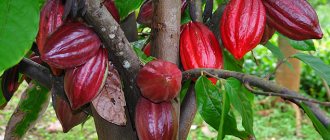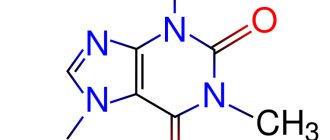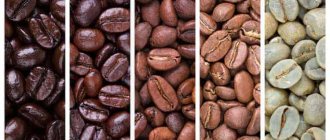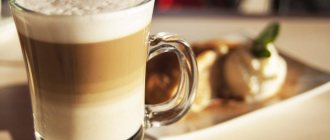Where does this component come from in tea?
In fact, tea contains a version of this substance - theine. They are similar in their effect, but theine has a much gentler effect on the body. Moreover, green tea contains several times more of it than black varieties. However, the caffeine in tea is never completely extracted, so to reduce the negative effects, you can use only a second brew.
Theine is formed due to the breakdown of caffeine and tannin, so the amount of alkaloids in it is much less. This substance is absorbed into the blood more slowly and eliminated from the body faster. This allows you to drink the drink on a regular basis and in large quantities, especially since the caffeine in tea is absorbed more easily by the body.
Not all teas are caffeinated. There are special caffeine-free varieties that retain the richness of the brew, aroma and taste, but do not excite the nervous system. This component is absent from hibiscus and all herbal infusions.
Biochemistry of tea
Chemical composition of tea
The diverse healing properties of tea are explained by the rich chemical composition of this plant.
If at the end of the 19th century scientists identified only 4 - 5 main types of substances in tea, today this figure has increased to 300. Interestingly, the chemical composition of tea is not constant. In the tea leaf, chemical changes occur all the time, the transformation of some substances into others. The chemical composition of freshly picked tea leaves differs from the composition of dry tea obtained from this leaf during processing. In dry tea it is more varied and complex. Not all chemicals present in fresh leaves remain in dry tea leaves. Some disappear without a trace, others undergo oxidation and partially change, others enter into complex chemical reactions and generate completely new substances with new properties and characteristics.
Green tea, which, unlike black, red and yellow teas, is not fermented, retains more nutrients. Tea has the remarkable property of releasing into solution only the most beneficial substances for humans.
of caffeine (theine) in it.
. Despite the fact that there is more caffeine in tea than in coffee, it has a much milder effect. Tea caffeine does not linger or accumulate in the human body, which eliminates caffeine poisoning even with the most frequent consumption of tea.
In addition to caffeine, tea also contains other alkaloids - theobromine
and
theophylline
, which have a vasodilator and diuretic effect.
Another important substance in tea is tannin
. It plays a decisive role in shaping the taste of tea. It is this that gives the tea infusion a pleasant tartness. High-quality teas contain the most tannin. Tea tannin (theotanin) is a tannin and has a number of healing properties: improves the digestive process, normalizes the condition of the gastrointestinal tract, strengthens the walls of blood vessels, and has an antimicrobial effect. Interestingly, green tea tannin has the ability to absorb and remove radioactive strontium-90 from the body, preventing the development of radiation sickness and leukemia. This discovery made by Japanese scientists helped many residents of Hiroshima who suffered from the atomic explosion to survive.
The main component of the complex tannin complex is catechins.
. The main healing effect of tea is associated with them. Catechin derivatives are used in the manufacture of medications that are prescribed for impaired capillary permeability, in the treatment of edema of vascular origin, nephritis, bleeding, migraine, and some forms of hypertension.
Tea tannin and catechins have vitamin P
necessary for the normal functioning of the body. Tea is one of the main sources of this vitamin. Vitamin P in combination with ascorbic acid dramatically enhances the effectiveness of the latter and promotes its accumulation and retention in the body. Green tea has much greater P-vitamin activity than black tea, although black tea can also provide the body with a daily preventative dose - for this it is enough to drink 3-4 glasses of good strength tea a day.
In addition to vitamin P, tea also contains other vitamins
: C (there is 10 times more of it in green tea than in black tea), B1, B2, PP, A, K, E. Most of these vitamins are transferred into infusion.
Protein substances together with free amino acids make up from 16 to 25% of tea (green teas are especially rich in proteins). Due to the quality of proteins, tea leaves are not inferior in nutritional value to legumes.
amino acids found in tea
, and the most important of them is glutamic acid, which is necessary for the functioning of the nervous system.
From minerals
contained in tea, it is especially worth highlighting fluorine, which protects teeth from caries, iodine, which has an anti-sclerotic effect, phosphorus and its compounds necessary for the nutrition of nervous tissue, potassium, which supports the normal functioning of the cardiovascular system.
Organic acids
, in particular, oxalic, lemon, apple, amber, increase the nutritional and dietary value of tea.
Thus, an infusion of high-quality tea, prepared according to all the rules, represents a unique concentration of valuable nutrients and medicinal substances necessary for the human body.
Information about the chemicals contained in tea and their effect on the body is presented in the table:
| Substance | Characteristic | Properties |
| Tannins (15-30% of tea) / Phenolic compounds | ||
| Theotanin/Tannin | Organic substances of the aromatic series, complex in composition, soluble in water. Tannins are widespread in the plant kingdom and have a characteristic astringent taste. Catechins have strong vitamin P properties. Derivatives of catechins are used for impaired capillary permeability, treatment of edema, nephritis, bleeding, migraine and some forms of hypertension. They have a vascular strengthening effect. | — gives the main taste to the tea infusion; — gives strength to tea; - used as a remedy for stomach disorders; - bactericidal, antimicrobial agent (has a detrimental effect on pathogens of intestinal infections (dysenteric, paratyphoid and other microbes); - preventive and therapeutic agent against atony of the digestive tract; |
| Catechins | — activate the activity of the liver and spleen, help enrich the blood with vitamins; - lower blood pressure, cure headaches; - strengthens capillaries; — promote the absorption of vitamin C, delay its excretion from the body; — strengthen the gums, protecting against periodontal disease; - the oxidation of catechins (during processing) produces orthoquinones, which have a toxic effect on pathogenic microorganisms; — together with tannin, they have antioxidant properties that help protect the body from the pathological consequences of radiation; | |
| Polyphenols | — inhibit urease, an enzyme that can influence the growth of cancerous tumors; | |
| Quinones (occurs only during factory processing) | - participate in the creation of aroma; | |
| Essential oils (0.02%) | ||
| Hydrocarbons | They are formed mainly during the processing of tea leaves, increasing their concentration as a result of oxidative processes during the withering and fermentation stages | - give the drink a unique taste; - effective as a preventative against the formation of stones in the liver, kidneys and bladder; — along with caffeine, they have tonic properties and stimulate brain activity; |
| Aldehydes | ||
| Ketones | ||
| Phenols | ||
| Complex acids | ||
| Alkaloids (1-5%) | ||
| Theine/caffeine | Caffeine does not appear in tea in isolation, but in combination with tannin, forming the compound caffeine tannate, which has a milder effect than pure coffee caffeine. | - acts more gently on the cardiovascular and central nervous systems than caffeine in coffee; — does not linger or accumulate in the body, which eliminates the risk of caffeine poisoning even with frequent tea consumption; - stimulates kidney activity, acting as a diuretic; — increases the intensity of metabolism in cells and the absorption of oxygen by tissues; - promotes dilation of cerebral blood vessels; - increases mental activity; |
| Xanthine | A purine base found in all tissues of the body. Xanthine derivatives include a number of stimulants such as caffeine and theobromine. | - have a tonic effect, stimulate mental activity; |
| theobromine and theophylline | - vasodilating effect; - has a moderate diuretic property (increases urination due to its effect on the renal epithelium and renal capillaries); | |
| Adeine and guanine | They are sparingly soluble in water, they can be removed from the tea leaf into an infusion only as a result of intense boiling or prolonged heating of brewed tea. Toxic. | - can cause excessive agitation, headaches, heart problems; |
| Protein substances (16-25%) | ||
| Proteins (all enzymes) | - are the main building material of the human body; | |
| Amino acids | — starting materials for protein synthesis; — necessary for the restoration and growth of muscle and connective tissues; - contribute to the restoration of the nervous system; | |
| Aldehydes | Formed by the interaction of amino acids with sugars, as well as tannin and catechins under elevated temperatures during tea production | - affect the aroma; |
| Pigments | ||
| Chlorophyll | Chlorophyll colors living tea leaves green. As a result of heat treatment, it is largely destroyed and remains mainly only in unfermented teas (white, green). | - responsible for the color of tea; - has a general strengthening effect, increases the body's defenses; - has an antibacterial effect; - has wound-healing properties, promotes the regeneration of body tissues; — improves intestinal function, promotes the removal of toxins from the body, and is a means of preventing urolithiasis; |
| Xanthophyll | - protects the body from the harmful effects of ultraviolet rays; | |
| Carotene (ß-carotene) | Yellow-orange pigment. Insoluble in water, but soluble in organic solvents. Contained in the leaves of all plants, as well as in carrot roots, rose hips, etc. It is classified as a provitamin. | - just like in plants, carotenes protect the cells of the human body from oxidation by free radicals; people whose cells are saturated with carotenes remain young much longer; — a high content of carotenes in everyday diet is a good protection against cancer; — heals the mucous membranes of the body; — strengthens the immune system, increases visual acuity, keeps the skin smooth and elastic; |
| thearubigins | High theoflavin content is typical for high-quality teas. If there is not enough of it, the tea will be dull. In good black tea, the ratio of theaflavin to thearubigin should be 1/10. The ratio of these pigments serves as a generally accepted criterion for tea quality. If stored or brewed improperly, theoflavine is easily destroyed. | - gives tea a reddish-brown color; |
| theaflavine | - gives tea a golden yellow color; | |
| Minerals and other inorganic substances (4-7%) | ||
| Magnesium | - important for nourishing various tissues of the body and maintaining the activity of the cardiovascular system; | |
| Manganese | ||
| Sodium | ||
| Silicon | ||
| Potassium | ||
| Calcium | ||
| Fluorine | Contained in the form of microelements | - have an anti-sclerotic effect; — prevent the occurrence of dental caries; |
| Iodine | ||
| Copper | - improve blood composition, increase the number of red blood cells; | |
| Gold | ||
| Phosphorus, orthophosphoric acid | - contribute to the saturation of nervous tissues with necessary substances; | |
| Resinous substances | Alcohols (resenols), resin acids, resin phenols and other organic compounds. | - act as tea aroma fixatives; - add stickiness to tea, making it possible to press it; |
| Slightly soluble substances | ||
| Organic acids (about 1%) | Oxalic, citric, malic, succinic, pyruvic, fumaric and other acids. | — increase the nutritional and dietary value of tea; |
| Enzymes (enzymes) | With their help, all chemical transformations occur, both in a living tea plant, during its growth, and in the process of tea processing. | - cause fermentation of tea; |
| Pectic substances (2-3%) | If there is a lack of pectic acid in tea, its hygroscopicity increases sharply, therefore, the tea spoils faster. Pectic acid covers each teacup with a thin, slightly moisture-permeable gelatin film. | - affects the hygroscopicity of tea; - helps to cure gastrointestinal diseases; |
| Carbohydrates | The higher the percentage of carbohydrates in tea, the lower its grade. Most of them are insoluble, mainly polysaccharides unnecessary for humans - starch, cellulose, hemicellulose (content in tea is 10 - 12%). Healthy carbohydrates - sucrose, glucose, fructose, maltose (from 1 to 4%) are soluble. | - have an anti-sclerotic effect; — ensure the preservation of vitamin B in tea; |
| Vitamins | ||
| Vitamin A - carotene | (see "carotene") | |
| Vitamin B1 (thiamine) | — promotes the normal functioning of the nervous system; - takes part in regulating the activity of most endocrine glands (adrenal glands, thyroid gland and gonads); - useful for patients with diabetes, stomach ulcers and gout; | |
| Vitamin B2 (riboflavin) | Riboflavin is a biologically active substance that plays an important role in maintaining human health. Riboflavin is a yellow-orange needle-shaped crystal with a bitter taste. | — necessary for the formation of red blood cells, antibodies, for the regulation of growth and reproductive functions of the body; — makes the skin elastic, prevents it from peeling; - helps cure severe liver diseases and myocardial dystrophy; — neutralize highly toxic aldehydes; |
| Vitamin B15 (pantothenic acid) | — prevents the development of skin diseases (dermatitis); - a catalyst for all processes of absorption of substances by the body; | |
| Vitamin PP (nicotinic acid/niacin) | Very resistant to high temperatures and highly soluble in water. | - antiallergic properties; — normalizes cholesterol levels in the blood; - important for ensuring heart health and regulating blood circulation; - participates in the conversion of fats into substances called eicosanoids, which control metabolism; |
| Vitamin C | There is 4 times more of it in fresh tea leaves than in lemon and orange juice, but during factory processing some of the vitamin C is lost. Its content in green and yellow teas is 10 times higher than in black teas. | - helps with varicose veins and hemorrhoids; - eliminates folds and wrinkles of the skin; — strengthens connective tissues; - smoothes the walls of blood vessels, from thick veins to microscopic capillaries; - necessary for the formation of collagen - a connective tissue protein; |
| Vitamin P | The main vitamin of tea. Almost all tea products containing catechins, including tea dyes, have so-called P-vitamin activity, i.e., the ability to act like vitamin P. In terms of vitamin P content, tea has no equal in the plant world; it is In this regard, buckwheat, for example, is much richer. Green tea has the greatest P-vitamin activity. By drinking 3-4 glasses of good strength tea, we provide our body with a daily preventive dose of vitamin P. | — promotes the absorption and accumulation of ascorbic acid (vitamin C); — strengthens the walls of blood vessels, prevents internal hemorrhages; - gives the skin a beautiful appearance, strengthening the walls of the smallest vessels and thereby eliminating the possibility of various subcutaneous hemorrhages, manifested in the form of blueness or redness of individual areas of the skin; |
| Vitamin K | - promotes the formation of prothrombin in the liver, which is necessary to maintain normal blood clotting. | |
Which variety to choose
The amount of caffeine in a drink depends on several factors:
- variety;
- harvest place;
- degree of leaf fermentation;
- infusion holding time.
The more expensive the variety, the higher the theine content, because for elite species only young leaves and buds of the plant are taken. So, the first leaves contain 4-5% of the substance, the second - about 3%, the third - 2.5, and the rest - up to 1.5%.
The amount of theine also depends on the place of growth. On high mountain plantations, the crop ripens more slowly, which allows the leaves to remain green for a long time with their original chemical composition.
The lower the degree of fermentation, the more caffeine it contains
Therefore, the most caffeinated varieties are green, oolong and white. But the brewing method also has a big influence here. They are poured with warm, but not hot water, due to which the leaves do not release as many theine compounds into the drink.
Brewing time also matters when deciding which tea has the most caffeine. Ideally, it infuses for 5 minutes. Prolonged infusion of tea leaves leads to the oxidation of phenol and essential oils, which gives the infusion a bitter and astringent taste.
To understand where there is more caffeine - in tea or coffee, you need to analyze the percentage of the required amount of brew per 100 grams. There is a special table of caffeine content in tea and coffee.
A little history and chemistry
Caffeine
It was first discovered in 1819 by the German chemist Friedlieb Ferdinand Runge. While studying coffee and the elements it contained, Runge isolated a new substance, previously unknown to people, to which he gave the name “caffeine” (caféine from the French word café - coffee). Later it turned out that this molecule is present in many plants, being primarily a natural insecticide and only secondarily a natural stimulant of the nervous and cardiovascular systems.
Thein
8 years later, in 1827, the Dutch organic chemist Gerrit Jan Mulder conducted a similar experiment (but not with coffee, but with tea) and discovered... yes, a substance suspiciously similar to caffeine. But, since it was found in tea, it was given the name "theine" - from the English word "tea" (tea).
The same molecule?
What happened next? And then Mr. Mulder thought for a long time and already in 1838 (that is, 11 years after his discovery) shocked the scientific community with the news that caffeine and theine are actually the same thing. In both tea and coffee, the substance has exactly the same structure and is a molecule of the formula C8H10N4O2. The same molecule is also found in mate tea (matein), guarana leaves (guaranine), cocoa and kola nuts.
Green
Having answered the question of whether there is caffeine in green tea, it is interesting to know its amount. One cup contains from 13 to 30 mg, while 100 grams of black coffee contains 60-65 mg. The composition of instant coffee is slightly different from natural coffee and the amount of theine in it is reduced - from 30 to 40 mg per 100 ml.
Is it possible to drink tea at night?
In green tea, caffeine is mixed with tannin and has a beneficial effect on the cardiovascular system and promotes the gradual release of energy. The caffeine in green tea fights hangovers well by blocking the absorption of alcohol into the blood. Once you find out how much caffeine is in green tea, you can determine the maximum daily dose of the drink.
A glass of green tea contains 5-8 times less theine than coffee. After all, its preparation requires only 0.4 g of tea leaves, which is similar to 0.012 g of caffeine. Whereas in a glass of coffee its content ranges from 0.05 to 0.1 g. The difference is obvious! Although green tea has properties similar to coffee and perfectly stimulates performance.
The caffeine content in green tea depends on the composition of the soil and climate of the place where the tea bush grows. Sunlight and cold mountain air contribute to the accumulation of theine compounds in tea leaves.
How to reduce the effects of caffeine on the body
There are several ways to reduce your caffeine intake without giving up your favorite drink:
- Pour water over the tea leaves, which must be drained after one or two minutes. Then re-brew the tea. The first brew contains a higher percentage of caffeine.
- It is better to drink tea hot, since the antioxidants present in the tea leaf can neutralize theine only in hot water.
- Add lemon, milk, cream to tea, which reduce the concentration of the alkaloid.
- You can reduce the concentration of the stimulant by using natural flavors: herbs, dry fruits, spices, candied fruits.
The complex chemical composition of tea softens the effect of caffeine, but moderation should still be observed.
Proper preparation and proper consumption of the tea drink will allow you to fully enjoy its beneficial properties. We also recommend reading an article about comparing tea and coffee, and an overview of the main types of tea.
Black variety
There is a well-established myth that the black variety is the leader in alkaloid content. However, we managed to find out that a strong degree of fermentation releases this substance from its composition.
How much caffeine is in black tea? One cup contains 70 mg of this substance. Compared to other drinks, this is not much. For example, a cup of coffee can contain up to 100 mg of theine, and its content in green tea is 10 mg more than in black tea. Even in a glass of Coca-Cola its value reaches 40 mg.
How much caffeine is in a cup of coffee
The amount of alkaloid is influenced by the variety, the degree of roasting of the beans (the weaker it is, the less it is), and the freshness of the grind. If grinding was carried out immediately before preparing the drink, the concentration of all substances is much higher.
Attention!
The greatest influence is exerted by heat treatment and extraction method. In a coffee machine it takes a long time, the liquid comes under pressure - the beans release more caffeine.
Natural coffe
For its production, a mixture of Arabica and Robusta is most often used - these are different types of grains. The ratio of components determines the taste. If you prepare a drink from each ingredient separately in a Turk from medium-roasted beans, then per 240 ml Robusta will “give” 170-200 mg of alkaloid, and Arabica - 40-60 mg. On average, a drink from the mixture contains 95-200 mg.
Freeze-dried (instant) coffee
For the same amount of drink, the content of the tonic substance is reduced - 30-180 mg. Nescafe Classic is considered the strongest (up to 4.2%). Jacobs Monarch produces products with 3.3% caffeine, Black Card - 4.2%.
Tea
This drink also tones and energizes, especially if it is brewed from high-quality tea leaves. The powder in the bags gives only a taste to the water in which it is dipped; there are practically no beneficial substances in it. A 250 ml cup of black tea contains 15-70 g of caffeine, green tea - 25-45 mg.
Attention!
Other compounds also provide a boost of energy: theine and tannin.
Where it's not
This alkaloid can be dangerous to the health of the heart and blood vessels, especially if consumed in large doses and constantly. Therefore, for people for whom it is contraindicated, it is better to give preference to decoctions and infusions free from it. Herbal infusions are the best replacement for traditional drinks. For example, chamomile, linden and jasmine. They are perfectly relaxing, soothing and completely harmless. They are good to drink before bed. Doctors advise pregnant women to completely switch to them.
There are no psychostimulants in fruit decoctions that children love so much, so parents don’t have to worry and give it at any time. Rosehip decoction is especially useful.
When choosing an invigorating drink, it is better to choose tea products. It has a gentler effect on the body and has fewer contraindications. Please note that the maximum daily dose of alkaloids is 1 gram. To understand whether your drink contains an acceptable dose, look at the table described above. Try not to abuse strong drinks and often replace them with herbal and flower infusions.
Table of caffeine content in natural coffee in mg
Each type of grain has its own alkaloid content. From the table you can find out which type of coffee has more caffeine - the most popular drinks are selected:
| Name | Cup volume, ml | Caffeine content, mg |
| Custard insoluble from well-known manufacturers | 150 | 90-130 |
| Espresso | 50 | 90 |
| Americano | 50-60 | 40-50 |
| Cappuccino | 160 | 70-80 |
| Latte | 160-170 | 70-80 |
| Irish | 160-180 | 70-80 |
| Affogato | 170 | 80-90 |
| Soluble | 100 | 30-60, depending on the variety |
If you make a top list of which types of coffee have more caffeine, it will look like this:
- Robusta, Congo and Uganda - 325 mg;
- Haitian - 201 mg;
- Cuban, Colombia, Meleber (India) - 195 mg;
- Venezuela - 192 mg;
- Guatemala, Javanese Arabica, El Salvador - 187 mg;
- Cameroon, Nicaragua - 180 mg;
- Arabica - 177 mg;
- Peru, Costa Rica, Mexican - 170 mg;
- Minas - 163 mg;
- Mocha (Ethiopia), Santos - 160 mg.
Attention!
A standard serving of a drink brewed from each type of grain is 170 ml.
How much caffeine is in decaf coffee
If the goal is to quit the stimulant, you will have to switch to an alternative to a tonic drink. Even the most decaffeinated coffee still contains some amount of the alkaloid.
The content depends on the variety and method of preparation. For example, a standard 30 ml cup of decaffeinated espresso contains 2-15 mg. For comparison: a regular drink is 45-75 mg. In a 240 ml cup of instant coffee after extraction there is 2-12 mg of tonic.











